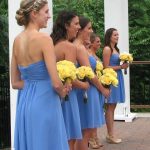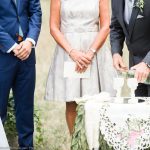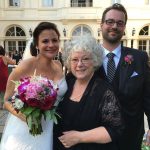Do you watch reality television? I read somewhere that the shows are plentiful because a reality show doesn’t cost as much to produce as would a show with A-list stars. But why are the shows popular? I think it’s because the participants came from “everyday” lives, like mine, like yours.

A singer in a competition
THE VOICE
I watch The Voice. I love the stories of the contestants, about what life was like before they embarked on their journey to an international stage. The way the contestant packages are edited, I can see their dreams, feel their disappointments, imagine their pain, and in some cases, relate to that pain. I watch knowing only one person will win, just as I know they can all succeed. For these singers, competing in front of the world is, in its own way, a rite of passage.
As with all rites of passage, there are three key steps. For contestants on The Voice, leaving home is Step 1: Separation. They must leave home. Some have never crossed a state line or flown on an airplane. To make the emotional journey, some face fears, some defy discrimination.
They all audition. The audience can tell if they feel nervous, vulnerable, desperate, or confident that now, finally, it’s my turn. Some are selected for the next phase. They undergo rigorous training and emotionally grueling competition. Week after week, their numbers shrinks. Then comes the final round. Finally, one singer is chosen as the winner. From this day forward, he or she will be known as “The Voice.” That’s Step 2: Transformation.
The winner is showered with confetti, congratulated by the judges, embraced by family. In the last, few on-air seconds, the winner emerges from the space of contestant to the stage of star, all to thunderous applause. And that’s Step 3: Incorporation. The transformation is visible and millions of people see it. Yes, the contestant is now a star.
WEDDING CEREMONY
As a rite of passage, a wedding ceremony celebrates those same three steps. We see the separation as the bride walks down the aisle, symbolically leaving home and childhood behind. That goes for the groom, too, whether he enters the ceremony space from the side, or walks down the aisle with his parents.
The core of what I’m about to tell you goes on a cue sheet, a one-page outline of what will happen in the ceremony. I make a ceremony cue sheet for the wedding planner, venue coordinator, photographer, videographer, DJ and/or musicians, anyone connected with the ceremony. My ceremonies usually include nontraditional rituals so I want to be sure my fellow wedding professionals are prepared – especially the photographers.
At the top of the list is the HOUSEKEEPING ANNOUNCEMENT. That’s not an official part of a ceremony but I’m including it here so you’ll know there are issues that need to be addressed.
When I officiate, I make an announcement before the processional music begins. I instruct the guests to silence their cell phones. I let them know how the couple feels about photos. For example, the guests can take photos as long as they do so only from their seats. Or, if the couple has requested an “unplugged” ceremony, I also ask the guests to put down their cameras. I tell them that the photographers will capture how the moment looks and that they are invited to capture how it feels, with their hearts, and without the distraction of technology. Of course, I assure them that at the end of the ceremony they’re both welcomed and encouraged to take photos.
Seating the HONORED GUESTS is a logistical item that needs attention. I’m talking about step-parents, grandparents, family members with mobility challenges. Sometimes, they’re seated before the other guests come in.

Bridesmaids in position at The Riverhouse in Haddam, CT
THE PROCESSIONAL
I consider this the first ceremony element. Whether entering single file or in pairs, walking down the aisle or entering from the side, members of the wedding party enter the ceremony space. I’m talking about the bridesmaids and groomsmen, the maid- and/or matron-of honor, flower girl, ring-bearer. I’m also talking about bridesmen, groomswomen, the man of honor, the best woman. Yes, man of honor and best woman. Because a gender-blended wedding party can be the best reflection of friendship and love.
A side note. Once the flower girls and ring bearers enter, they should sit with a family member. Make sure the little ones know where they are to sit. Of course, if your flower girls are your grandmothers, that’s another story, and a beautiful one at that.
ENTRANCE OF THE BRIDE
I’m using the terms “bride” and “groom” in this post. The information applies to same-sex weddings, too, with a few adjustments.
The bride may enter with her father, mother, both parents, a grandparent, her children. She may enter enter alone. She may walk half-way down the aisle with her parents and walk the rest of the way alone. She may walk alone and be joined by her parents at the end. There is no one, right way.

Bride Asya enters with her parents in a ceremony at Farmington Gardens in CT

Bride Lauren walks in with her dad at the Lord Thompson Manor in Thompson CT
STEP 1 in a Rite of Passage: Separation
When the bride walks down the aisle, she is undergoing Step 1 of a Rite of Passage: Separation. The groom does the same when he enters the ceremony space whether he walks down the aisle or enters from the side. In entering the ceremony space, each one symbolically leaves another space behind, that of family and childhood. Other than the officiant, no one but the couple enters the ceremony space.
STEP 2 in a Rite of Passage: Transformation
I begin this part of the ceremony by welcoming the guests, noting that some of them have traveled for miles, others for years, to be with this couple. The purpose of the welcome goes beyond courtesy. These people will witness the transformation that’s about to take place. These people know the bride and groom from the past, from a time when they didn’t know each other, from a time when they were not in love with each other.
MOMENT OF REMEMBRANCE
If the couple wants to acknowledge family or friends who have died, this is the appropriate place in the ceremony to do so. Sometimes, the acknowledgment is general, sometimes specific by name, and sometimes with a meaningful story.
Many couples incorporate the symbol of trees in their wedding stationery and décor. That’s because when a couple gets married, they change family trees. Like the welcoming remarks, acknowledging family members who have died goes beyond courtesy. On a subtle level, a moment of remembrance says, yes, I just walked down the aisle and symbolically separated from my past. But I’m still part of a family tree.

Family Blessing ritual_Photo by Ali & Julie
RITUAL: THE FAMILY BLESSING
In this ritual, someone from the bride’s family welcomes the groom someone from the groom’s family welcomes the bride. I adapted this ritual from one taught to me by Rev. Sheila Gay Gross. Most of the time, the moms participate, though I’ve also done the ritual with the dads, step-parents, with both moms and dads, with grandparents, with grown children, or with friends.
I use two wine glasses, or juice glasses, or coffee cubs, or beer steins. The beverage doesn’t have to be alcoholic. One couple used beet juice, freshly prepared hours earlier by the groom, a chef.
For the ritual itself, I first have the groom move to stand next to the bride. Then one of the parents reads a line or two of wedding wisdom. I get that bit of wisdom ahead of time, type it on card stock and tuck it into my ceremony book. The wisdom can be serious or funny. I write the closing line for each mom. Doing so gives a sense of unity to the ritual.
For example, the mom of the groom would say to him, “{insert groom’s name}, on behalf of our whole family, your father and I bless your marriage and welcome our new family member – { insert bride’s name}. Then the mom pours the beverage into one of the glasses and gives it to the bride.
Lots of variation are possible. If both moms and dads participate, one can give the wisdom and the other can pour the beverage and welcome the new family member.
Home is where your story begins.
Let me rewind a bit. When I introduce this ritual to the guests, I describe the painted, wooden plaque hanging in my kitchen: Home is where your story begins.” I let the guests know that, months earlier, while writing the ceremony, I asked the couple how they had been influenced by their parents and grandparents. I’m then able to weave some of their reflections into the ritual. That can be a deeply meaningful gift to the parents and grandparents. I’ll give you an example.
In October of 2017, I was the officiant for Lauren and Justin. The wedding was held at The Barns at Wesleyan Hills in Middletown, CT. As usual, I arrived early so I’d have time to settle into the energy of the ceremony space. The guests wouldn’t arrive for another 30 minutes so I was surprised to see an elderly man already sitting on the aisle in the front row, groom’s side. As I walked down the aisle, I saw his oxygen tank. And then I remembered that Justin said his grandfather, Pap, would be seated before the ceremony began and that his grandfather, like Justin, enjoyed simply being outside. I introduced myself and we chatted a moment or two.
Fast-forward to the ceremony and the Family Blessing ritual. Speaking to the guests, I quoted Justin, who had been raised by his grandparents. “My grandparents are my rock. Without them, I have no idea where I would be today. My Pap taught me the value of hard work, discipline, to never be satisfied with mediocrity and to always fight for what I believe in. My Nan taught me compassion, the true meaning of resilience, to always give more than I take, to forgive, to be true to myself and, most importantly, how to love. They’ll celebrate their 50th anniversary this November! They loved me unconditionally and never discouraged me from following my dreams. They always believed I could achieve great things. I am honored and blessed to have these two incredible people in my life.”
As you can imagine, Justin’s Nan and Pap had tears in their eyes. So did a lot of other people. Justin’s grandmother represented his side of the family in the ritual. When she came up, I took her wedding wisdom card from my ceremony book and handed it to her. She looked at her grandson, so handsome, so happy, and found it hard to speak. I put my hand on her trembling shoulder and whispered, “One grandmother to another…you can do this.” We smiled in that “knowing” way. She shared some beautiful wedding wisdom, poured the wine, and welcomed Lauren into the family.
When the wedding was over, I had someone take a photo of me with the newlyweds. I didn’t stay for the reception, so I didn’t know until the next day when Lauren sent me an email to say that just before the DJ was to introduce them as Mr. & Mrs., Justin’s grandfather collapsed from a heart attack and died.
Lauren’s email added, “I just think it is so beautiful that the ceremony was the last thing Pap heard. He got to hear exactly how Justin felt about him in his last moments. We haven’t seen him so happy in ages. The ceremony is now even more special.”
Justin is a forest ranger. He and Lauren had a few days before they needed to head out west to his post. On one of those days, they came over for dinner. Justin confirmed what Lauren had told me in her email. In front of all their family and friends, Justin got to tell his grandfather “I love you.” And in front of all their family and friends, his grandfather got to hear it.
Justin’s grandmother would move on alone. So would Justin and Lauren. That’s how life works. We talked about that at dinner. Both said that thanks to the ceremony, they could do move on with a sense of peace. That is what a good ritual can do.

Gift of basil for courage and protection
GIFTING RITUAL
I’m not a fan of readings unless the words have special significance to the couple. Instead, I encourage my couples to include a gifting ritual. Whatever the content of the ritual, it provides an opportunity to involve special guests who are not part of the wedding party. Depending on the nature of the ritual, I recommend involving four guests, the number for stability, or seven guests, the number for good fortune.
The guests are predetermined the couple and told to find me when they arrive for the ceremony. I give each guest the gift to be presented, along with simple instructions. They are not to ad lib.
The gifts might be herbs, fresh or dried, stones, cross-sections of trees, seafaring knots, contemporary prayer flags, butterflies (artificial, please!), stalks of lucky bamboo, shards of sea glass. I’m working on a variation with different kinds of lace for a couple getting married at a historic lace factory. What’s key is that the gift represent something important to the couple.

Wedding Wish Jar with 2 rose quarts hearts
WEDDING WISH JAR
For this ritual, I use small, custom-made pottery jars, about two inches high, with cork lids. I introduce the ritual to the guests with these words:
In choosing her maid of honor, a bride shares her dreams and her anxieties. The same thing happens when a groom chooses his best man. They know, in a way that only they can, what the bride and groom have gone through to reach this day. Using hearts carved from semiprecious stone, our honor attendants will make a wedding wish for our couple. If the wish is silent, it must be shared with them before the night is over.
I give the jar to the bride and give hearts to the maid of honor and best man. The honor attendants make their wises and drop the hearts in the jar. Simple. I close by saying, When you’re on your honeymoon, find something to add to the jar. On every anniversary, take out everything in the jar. Hold each piece. Remember the wishes made for you today. Makes new ones of your own. Add new stones, or flowers, or shells, or acorns, or sea glass. Celebrate the day you need a bigger jar!
This little ritual takes about a minute and a half. Yet it gives the honor attendants a meaningful role in the ceremony. If there are co-maids of honor or co-best men, I use additional hearts.
THE LOVE STORY
Once upon a time…
That’s how I start this part of the ceremony. The words are not expected in a wedding ceremony and yet, from my perspective, a wedding is the celebration of a love story.
Usually, the guests know the couple as a family member, a friend, a co-worker, a neighbor, but not likely in all those capacities. When they hear the love story, they learn something about couple, both as individuals and as a couple. I want to show the guests how and why these two people fell in love. I’m not talking about a simple laundry list of mutual likes. I’m talking childhood assumptions about marriage, the rocky roads of growing up. I’m talking the potholes of heartbreaks and disappointments. I’m also talking dreams and dedication, goals and achievements, the fight for independence and the longing for commitment. I’m talking ethics, expectations, shared visions, and shared values. I’m talking story. I want to show what makes this couple’s love story unique?
In the ceremonies I create, the Love Story carries a lot of weight and accomplishes three key things:
- It provides a prelude for the couple before they make their vows.
- It assures the parents that their children inherited the best of what they had to offer. Or, in some cases, that their children survived despite the challenges created by, or because of, the parents.
- It provides a blueprint of what love really looks like. For guests who long for the commitment of marriage but haven’t found that special someone, hearing about how the bride and groom fell in love can open a person’s eyes to what’s really important in a relationship. How can I be so sure? Because, inevitably, the love story will show respect, humor, support, a generosity of spirit that can’t be measured, what it means to be and to give the best version of yourself.
To write that story, my couples must answer a lot of questions! The questions aren’t hard but they do require time and thought. It often takes them a few months.
EXCHANGE OF VOWS
When I write the love story, I want it to flow organically into the exchange of vows. Because my ceremonies are not traditional, I know that traditional vows will anchor the ceremony in the minds of some who might be surprised by the love story and the rituals. That said, I’m a big fan of personal vows. When couples want to include personal vows, here’s what I say immediately after the traditional vows.
The beauty of traditional vows is that they are so recognizable. The beauty of personal vows is that they comes from a secret place in the heart.
In guiding my couples who do want to include personal vows, I advise them to keep their vows similar in length and tone. Because they don’t always share their vows with each other before the ceremony, I tell them to aim for eight lines.
I also encourage them to email their vows to me. I can let them know if the length and tone are similar. Plus, I’ll type the vows on card stock and tuck them into my ceremony book. That way, they don’t have to worry about losing them.
Whenever I think about wedding vows, I think about one of my couples. Let me share a story.
A reporter from the Hartford Courant sat in my living room. Mara Lee had come to interview me for “Main Street,” a column in the Sunday edition that focused on small businesses. She had found me on the wedding directory website, Offbeat Bride.
She asked the pertinent business question. I was candid in my answers. At the end of the two-hour interview, she asked how my work as a wedding officiant had affected my marriage. I answered something about my own wedding. She pressed. No, not my wedding. My marriage. I can still picture the moment, still feel the tightness in my throat.
I glanced up the stairs where I knew my husband of 35 years would be at his desk trying to make sense of an increasingly confusing computer. The challenge had nothing to do with his electronic device and everything to do with his fading memory.
Many years ago, he’d been a news director in radio in California. He had interviewed Lucille Ball, Joan Baez, Caesar Chavez, and a young George Foreman, newly minted Olympic gold medalist. That was in 1968, a long time ago. My husband would have been interested in listening to Mara interview me, but, he wasn’t feeling right. This was seven months before we got the official diagnosis: Alzheimer’s.
So, in that moment, with Dick upstairs, Mara on the chair facing me, I thought of Vanessa, the bride whose ceremony I had been writing. An early draft of their love story described the qualities she and the groom, Jon, admired in each other. Then I wrote about the creative ways each had found to express their love, from the daily photos and notes she sent to him while they were apart to the double rainbow maker he gave her. A subsequent draft gathered happy memories of her late father along with the sadness that he wasn’t there to walk her down the aisle.
Vanessa liked the first draft but felt something was missing. She was a genetics counselor and worked a lot with women testing for cancer. Not one to shy away from the hardships of life, she wanted the ceremony to reflect the gravitas that comes with marriage.
I thought about my baby sister, Eileen, and her husband Robert, a man I loved like a brother. Eileen was in her 60s. She had Robert had been together since the 8th grade. He hadn’t been dead a year yet. Cancer. The grief was still fresh, still raw. I called my sister several times a week. She was putting one foot in front of the other. That’s all she could manage.
So I said something to Mara about the weight of wedding vows and how honoring them can make a couple stronger than they might have ever thought they’d be. When Mara left, I worked on Vanessa’s ceremony. To bridge their love story and their vows, I wrote this:
Neither Vanessa nor Jon is naive to the complexity of marriage. They know that the power of wedding vows comes from the willingness to communicate heart to heart, even when it hurts to say, or hear, the words. They also know the healing power of saying, or hearing, “I love you.”
They know that “for richer, for poorer” speaks both to fiscal responsibility and to the fluctuations of an uncertain world. They know that a future built on shared values is priceless.
They know that “in good times and in bad” acknowledges that life will bring both. The 50/50 equation of support will see-saw to 60/40, to 70/30. They know that balance can be restored with insight and understanding, with compassion and commitment.
They know that “in sickness and in health” requires courage, the kind that roots us deep into the ground so we can withstand the unexpected, the unimaginable. They know that in a strong marriage, caring for one another is not an obligation. It’s an honor.
Above all, they know that happiness in a marriage is co-created. They stand here today, both willing and eager to do their part.
 I’ve used that language in almost every ceremony since then. And I’ll be forever grateful to Vanessa.
I’ve used that language in almost every ceremony since then. And I’ll be forever grateful to Vanessa.
Since then, I’ve added language to tighten the focus on the couple. I use their full names – first, middle, last – and say:
A man’s destiny is determined by the choices he makes. {Groom}, do you take…”
And then, A woman’s destiny is determined by the choices she makes. {Bride}, do you take…”

Bride puts on a wedding ring on groom’s finger
EXCHANGE OF RINGS
Wedding rings are outward symbols of commitment. When I introduce this part of the ceremony, I include these words: A wedding ring says to the world and to the one who wears the ring: I love and I am loved.
At the rehearsal, I always tell the best man not to give the rings but to hold them cupped in the palm of his hand. That way, the groom and the bride must each make a conscious choice to take the ring. The symbolism is subtle but wedding ceremonies are built on such symbolism.
DECLARATION OF MARRIAGE
Here’s the moment everyone has been waiting for. I usually say, I now have the honor to pronounce you husband and wife. Or, for my same-sex couples, I might say, I now have the honor to pronounce you lovingly, legally married. Or, I now pronounce you wife and wife. Or, I now pronounce you married, each spouse to the other. I go over the language with my couples ahead of time to make sure my words reflect their wishes.
With the declaration of marriage, the Rite of Passage – Step 2, Transformation, is complete. This is when I tell the guests to get their cameras ready.

Newlyweds share their first kiss
FIRST KISS
Sometimes, as part of the love story, I talk about the first kiss the couple shared. I say that in many cultures, the words for spirit and breath are the same, and the act that blends two spirits marks a significant point in a relationship. Here, at the end of the ceremony, these two people who have kissed many times will share their first kiss as a married couple. I say to them: Please begin your married life with the most recognized expression of love. {Name of Groom}, kiss your beautiful bride!
PAUSE!
My couples often comment on how quickly time passes in the weeks before the wedding. I know that on the day itself, these two people will be directed by their venue coordinator, DJ, photographer, videographer, and others. Wait here. Go there. Line up. Wait for the music. Walk slowly. Bouquet at the belly button. As the officiant, I’m directing them, too. Repeat after me. Place the ring. Kiss your bride. I want my couples to capture the moment of transformation, to feel it in their marrow.
At the rehearsal, I tell them that when this moment comes, they can pause, embrace, look at their hands, look in each other’s eyes, just take it all in!
When the time feels right, I tell the bride to retrieve her bouquet and take her husband’s arm.
RECESSIONAL with 3 Magic Kisses
Ladies and Gentlemen, the Newlyweds!
Those words cue the music. As the couple begins their walk down the aisle, they pause at about the third row of chairs for kiss #2. They pause again just before the last row of chairs for kiss #3.
As I tell my couples at the rehearsal, they can’t have too many kisses – especially in a rite of passage that’s all about love. Plus, the guests can now use their cameras. The photo they all want is the romantic kiss.
Rite of Passage step #3: Incorporation
In addition to the magic of the number 3, pausing to kiss while going down the aisle emphasizes Step 3 in a Rite of Passage, that of Incorporation.

A really happy looking bride and groom being showered with confetti by htier guests
These two people are now a married couple. Their transformation has been witnessed by everyone present. With applause, or rice, or bells, or bird seed, the guests affirm the couple’s new identity and, in doing so, incorporate them into the larger community.
When I work a couple who has eloped, I hug them, congratulate them, and affirm that I see the change. It truly is visible! Then I urge them to go out to dinner and tell everyone they just got married. Most people, including strangers, will shower them with good wishes. Even if the couple tells no one, receiving the marriage certificate a week or so later from the town clerk affirms that the state recognizes their transformation and affirms their incorporation into the state’s vital records as a married couple.
MISCELLANEOUS CLOSING RITUALS
Sometimes, a couple includes a specific ritual just before the recessional. For example, if one, or both, parties are Jewish, they might include Breaking The Glass. When a couple chooses this ritual, I always have the best man slip the glass into a drawstring bag that has a plastic bag liner, the kind that zips shut. He zips the plastic bag, draws the string on the presentation bag and places it at the foot of the groom. Usually. I’ve done ceremonies where both parties break the glass. But not at the same time. One wrong move and someone’s foot could be seriously injured!

Sariann and David jumped both the sword and broom.
Jumping the Broom or Jumping the Sword are other rituals a couple might want at the end of the ceremony. I’ve done both, in the same ceremony. The best man placed the sword on the ground in front of the couple. They jumped. The maid of honor placed the broom on the ground right in the couple’s path. They jumped.
Including a cultural ritual, even if the couple has never practiced any cultural rituals before, can create a celebratory moment that honors the ancestors, a moment that feels like being part of a legacy. Because that’s exactly what it is.
A bit more about those 3 kisses
I work with the magic of the number 3. It goes back eons to when people recognized the pleasing sound created by three harmonious notes. Some say, early mankind heard the sounds of the universe. Those two added kisses I mentioned above are on the cue sheet. The photographers have captured some gorgeous, joyful shots of that 3rd kiss with all the grinning guests turned to watch.
HEA
The last step, the HEA, isn’t technically part of the ceremony but it’s what I have in mind when I meet with a couple for the first time, whether that’s in-person or online, whether I wind up working with them or not.
HEA, Happily Ever After, is what I envision for every couple.
In the end…
My goal in this blog post, the corresponding podcast episode, and YouTube video is to reveal the pattern of ritual as used in a wedding ceremony. By seeing the pattern in any ritual, you can work with it on a conscious level.
In a rite of passage, such as a wedding or a funeral, it’s not unusual for people to shed tears of joy or sorrow. I know I did last year when I saw Prince Harry marry Megan Markle. Like many of you, I had watched that young man grow up and wanted so much for him to be happy. A few weeks ago, I got teary-eyed watching the funeral of a president, listening to his son talk about love for his father. I don’t imagine I’ll ever meet Prince Harry or President George W Bush, but we all swim in the same ocean of emotions. We’re all so much alike. I think a good ritual taps into that current and brings people together in a cosmic or spiritual way. That goes for people we’ve never met.
So if you want to create, or deepen, a ritual practice for yourself or your family, subscribe to this podcast. I offer safe and simple ways to begin.
You’ll learn to mark the moments and milestones, to see patterns in nature, and to imbue even the most mundane tasks with the magic of intent. Doing so will make the world – your world and my world – a better place.

